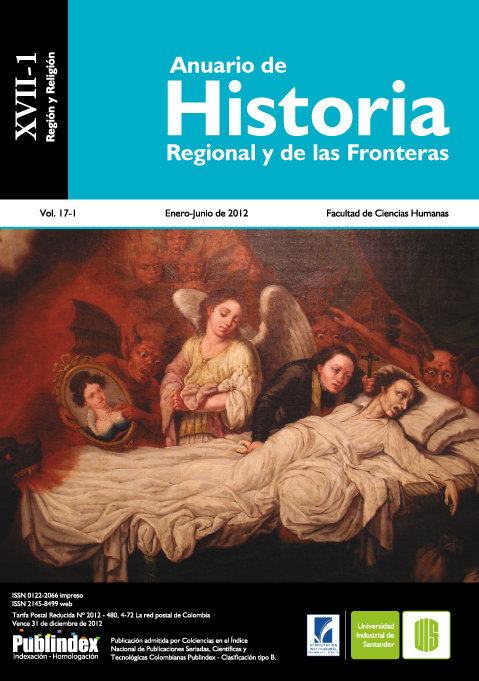Publicado 2012-08-15
Cómo citar
Resumen
Tradicionalmente el tratamiento científico utilizado para comprender las distintasformas de pensamiento y los diferentes modos de vida humano, ha partido dela ponderación de ámbitos específicos a saber: económico, político, cultural,cosmogónico o religioso. En la práctica científica, los fenómenos sociales presentesa lo largo de la historia humana, se han estudiado tomando como eje de análisis la cultura y en el contexto de ésta, se le ha dado gran preponderancia al tema de la muerte asociada al fenómeno religioso. Así, la muerte en el contexto religioso, constituye un eje transversal que integra los demás ámbitos y que está signado por un carácter simbólico que se conecta con el proyecto humano, a través del cual, se considera al individuo como ser concreto y social y como ser cultural.
Este marco, precisamente ha inspirado este artículo sobre el ámbito funerarioreligioso de la sociedad Guane, asentada en la región santandereana en el Orientede Colombia, cerca a la frontera con Venezuela, cuya cronología corresponde al período comprendido entre los Siglos X-XII al Siglo XVI d.C. Así, a partir de los datos obtenidos en nuestras excavaciones arqueológicas, planteamos una reflexiónsobre posibles prácticas culturales inscritas en mitos y ritos, cuya expresión material y espiritual nos marca formas de actuación humana, incluyendo diálogos simbólicos dela vida y la muerte representados en: la arquitectura funeraria, el manejo del espacio fúnebre, las formas de enterramiento, el ajuar funerario y la posición del cadáver, cuyo manejo cultural en conjunto, determina los límites del ámbito de lo sagrado y lo profano en el contexto de su cosmovisión o de la vida religiosa.
Palabras clave: Religión, Guane, sociedad prehispánica, muerte.
